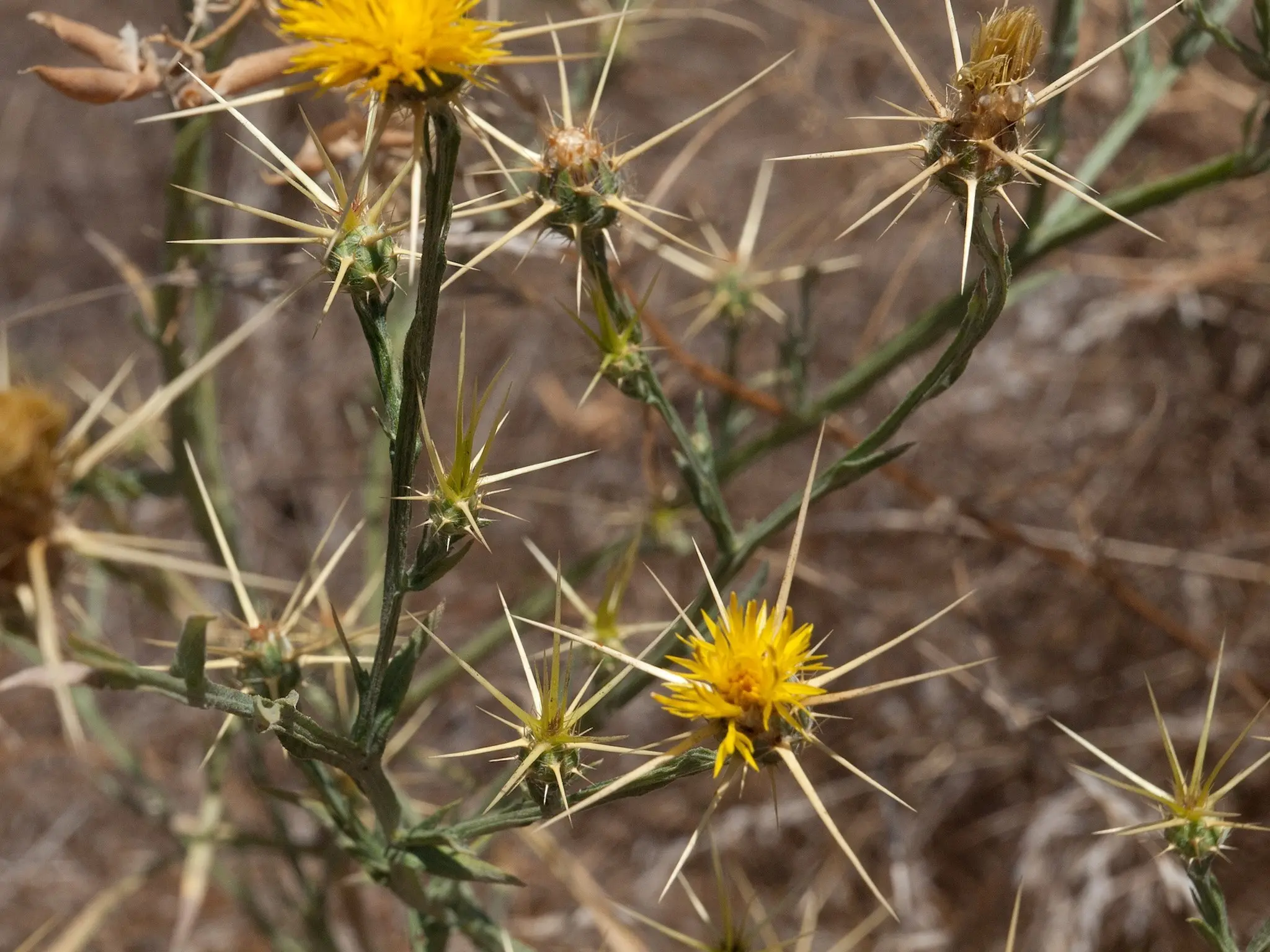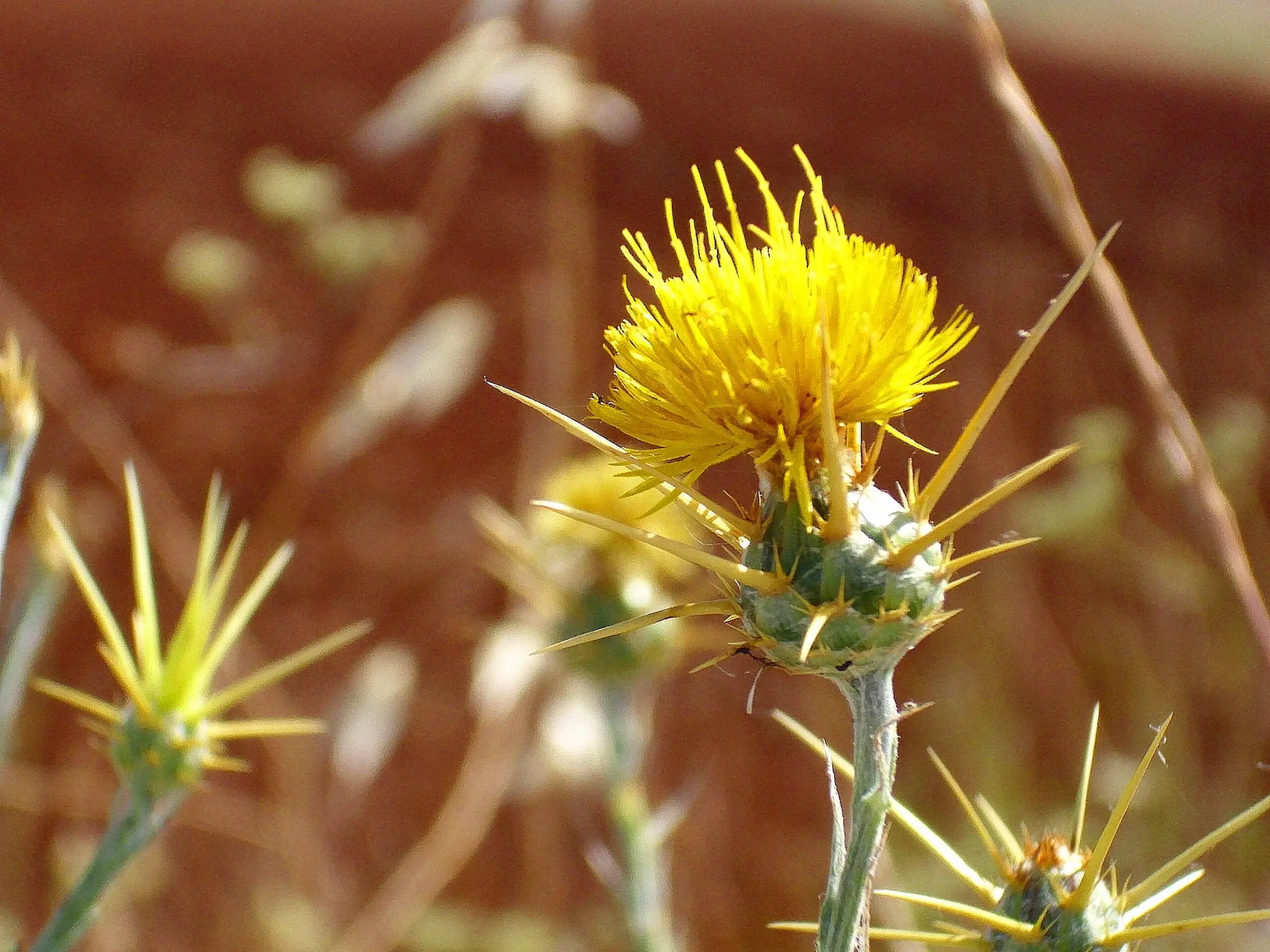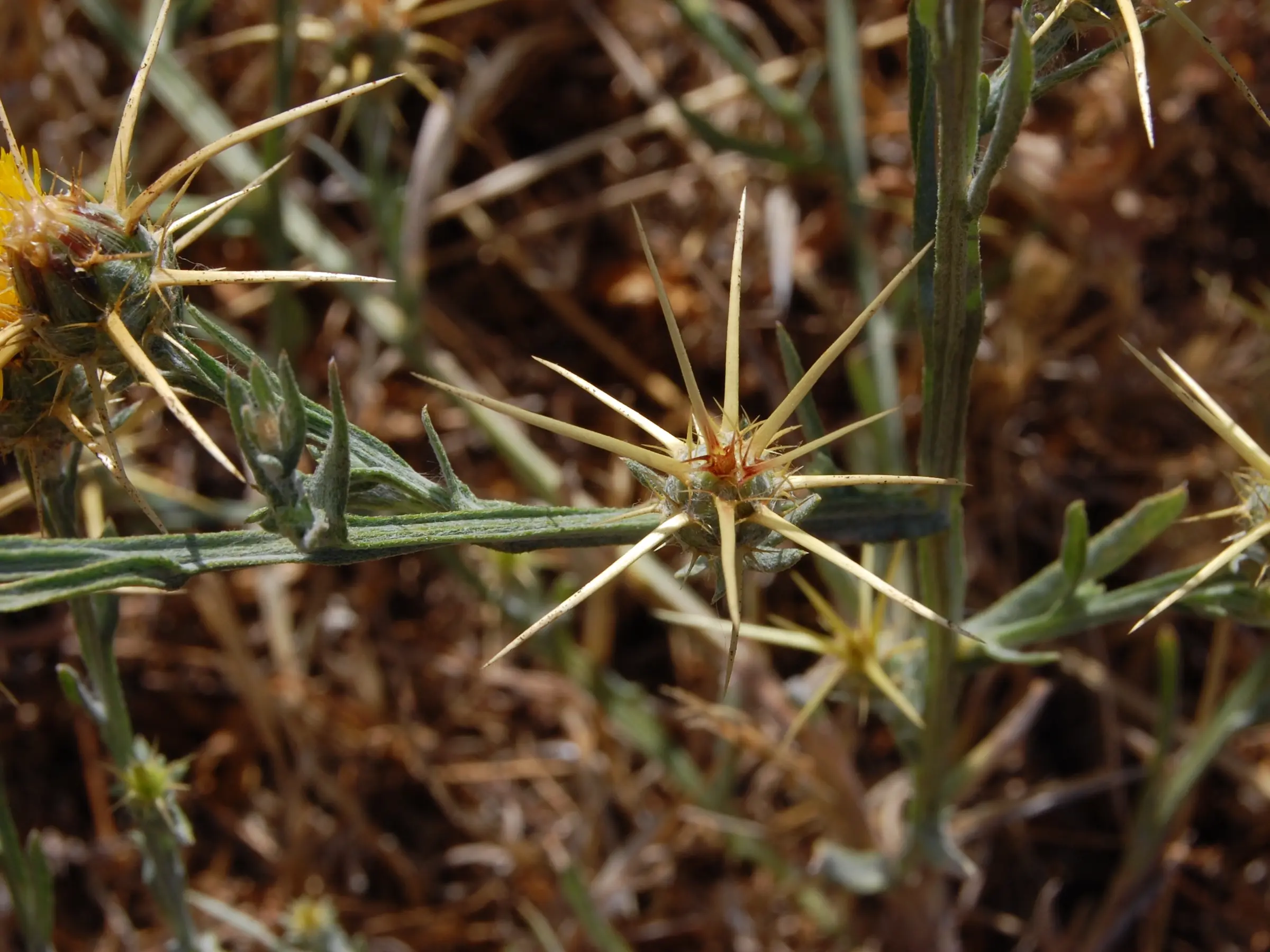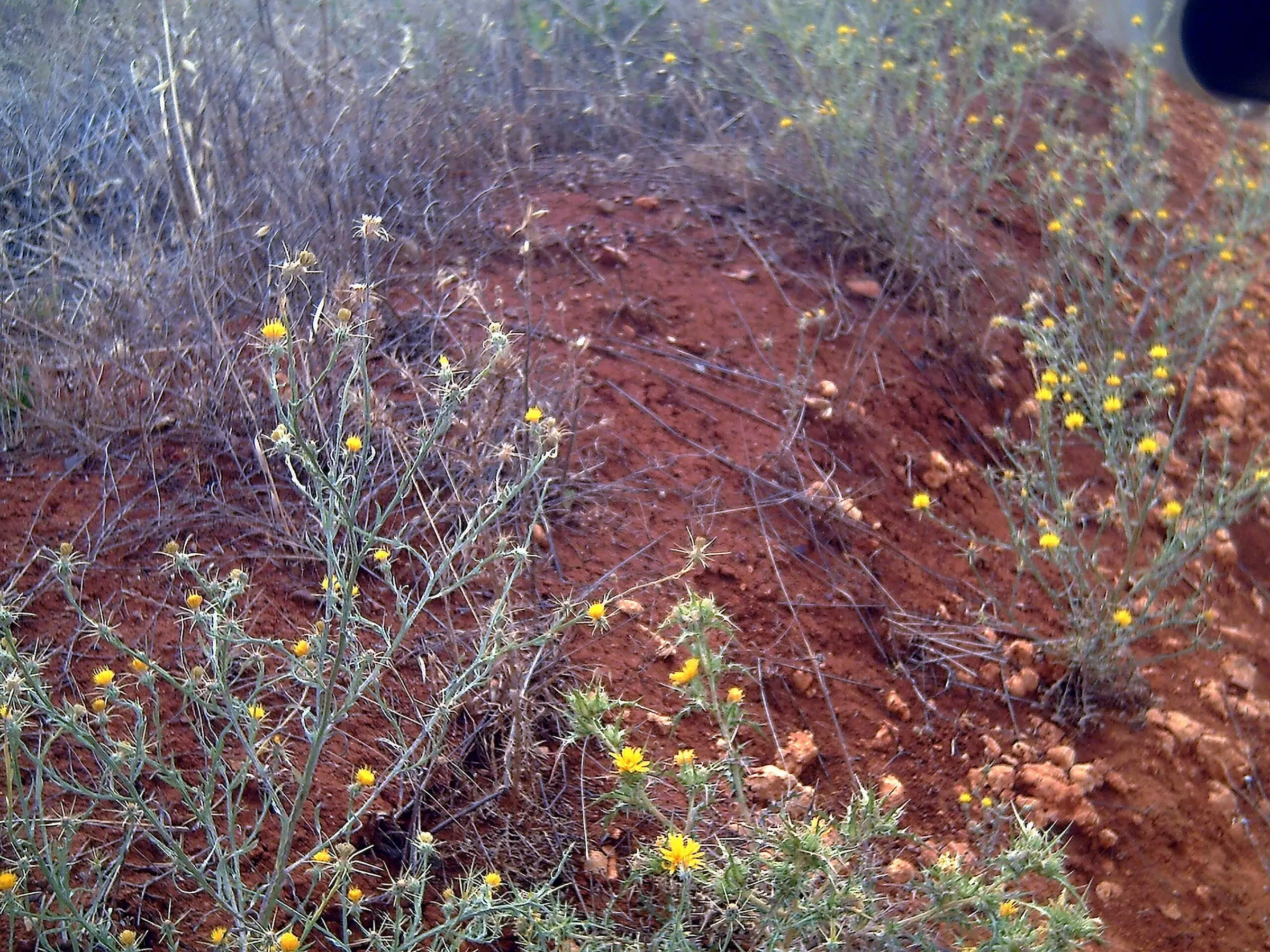
Names
Centaurea solstitialis, Russian Knapweed, Barnaby’s Thistle
Description
Annual weed that can grow up to three feet. Flowers are yellow, purple and white and round and surrounded by stiff spines. Stems are covered in gray hairs.

Concern Level
Only during drought conditions, unpalatable. Can be incorporated into hay & a large percentage of poisonings in horses is from fresh hay. Unfortunately animals can develop a taste for the plant in hay and eat it even when there is other forage available to them.
Toxic Parts
The entire plant both fresh & dried (and barbs can cause mechanical damage to mouth & throat).

Symptoms
Grinning appearance, open mouth, protruding tongue, yawning, depression of central nervous system, lack of appetite, difficulty breathing, death due to not eating and drinking.
Danger
Unknown toxic component causes “chewing disease”. Neural damage is permanent, can be fatal from dehydration and malnutrition.

More Information
*It should be noted that we are not veterinarians. This information is written specifically for horses and should be used for reference purposes only. If you think your horse has eaten something toxic call your vet right away.